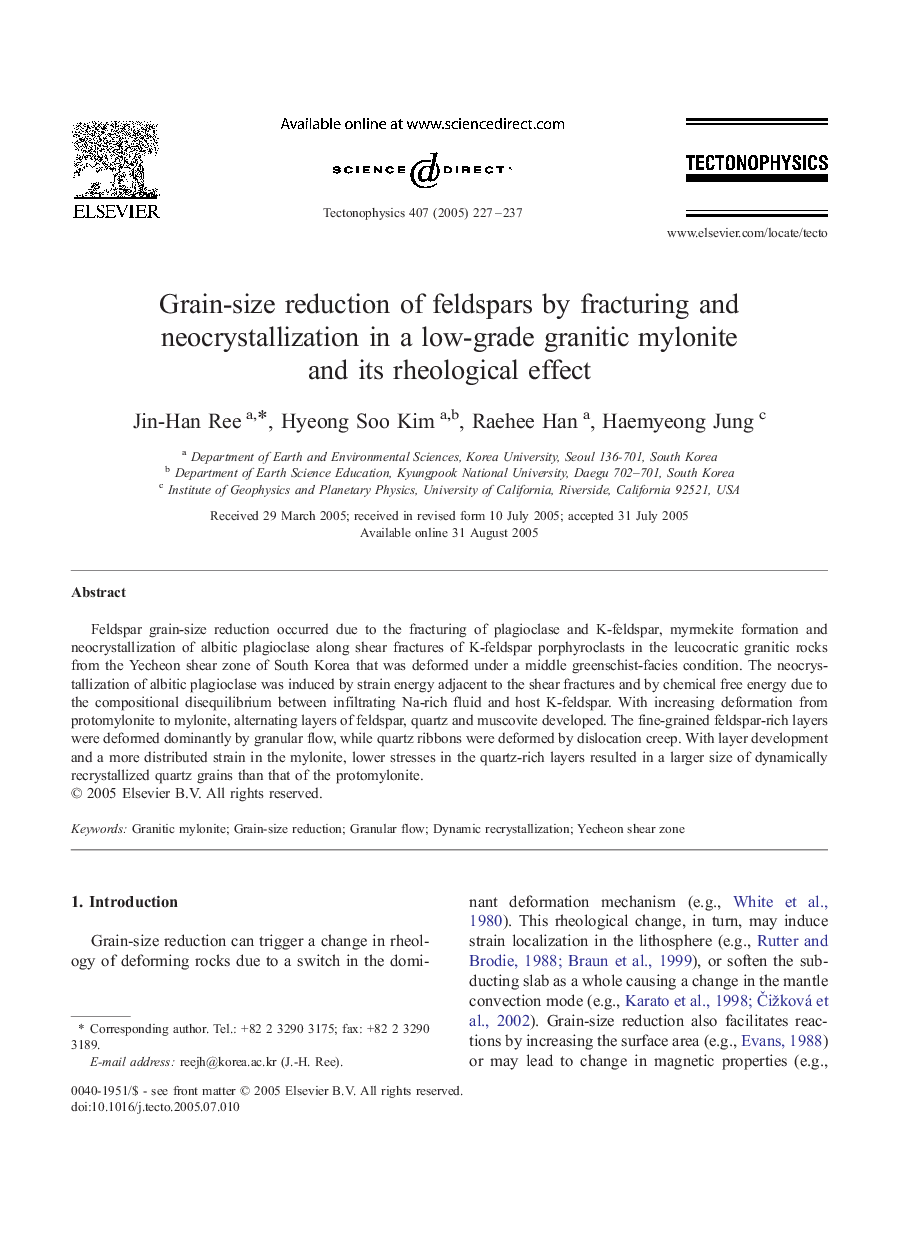| Article ID | Journal | Published Year | Pages | File Type |
|---|---|---|---|---|
| 9526921 | Tectonophysics | 2005 | 11 Pages |
Abstract
Feldspar grain-size reduction occurred due to the fracturing of plagioclase and K-feldspar, myrmekite formation and neocrystallization of albitic plagioclase along shear fractures of K-feldspar porphyroclasts in the leucocratic granitic rocks from the Yecheon shear zone of South Korea that was deformed under a middle greenschist-facies condition. The neocrystallization of albitic plagioclase was induced by strain energy adjacent to the shear fractures and by chemical free energy due to the compositional disequilibrium between infiltrating Na-rich fluid and host K-feldspar. With increasing deformation from protomylonite to mylonite, alternating layers of feldspar, quartz and muscovite developed. The fine-grained feldspar-rich layers were deformed dominantly by granular flow, while quartz ribbons were deformed by dislocation creep. With layer development and a more distributed strain in the mylonite, lower stresses in the quartz-rich layers resulted in a larger size of dynamically recrystallized quartz grains than that of the protomylonite.
Related Topics
Physical Sciences and Engineering
Earth and Planetary Sciences
Earth-Surface Processes
Authors
Jin-Han Ree, Hyeong Soo Kim, Raehee Han, Haemyeong Jung,
